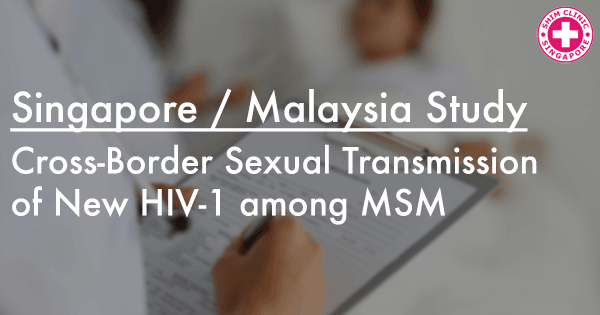Cases of HIV-1 infection in South East Asia, in particular Singapore, have been increasing over the past decade. Sexual intercourse has been reported as the major mode of HIV transmission, especially through heterosexual and homosexual sexual intercourse. The case in Singapore regarding HIV-1 infection in Singapore is similar to that in Malaysia. An increase in the number of sexually transmitted HIV-1 cases has also been observed in Malaysia over the last couple of years. Since both countries enjoy close socio and economic connections, there is a looming risk for cross-border transmission of HIV-1 between Singapore and Malaysia.
In order to investigate the geographical origin of HIV-1 and the possibility of movement between Malaysia and Singapore, Hui et al, conducted a molecular epidemiological study using 595 participants in Kuala Lumpur, Malaysia, between 2008 and 2012. The study was recently published in PLoS ONE.
A Molecular epidemiology study was done using HIV-1 CRF51_01B series data from Kuala Lumpur, Malaysia and Singapore to investigate the early evolutionary occurrences connected to the emergence of HIV-1 CRF51_01B and the possibility of cross-transmission between the two countries. From the 595 HIV+ participants, the researchers amplified and sequenced 485 protease-reverse transcriptase genes successfully. Out of the 485 screened patients, 139 were heterosexual, 69 homosexual, 5 bisexual and 31 patients reported injecting-drug use risk behavior.
According to the researchers, HIV-1 CRF51_01B has only been found in Singapore before now. In the study, the researchers report that the first discovery of two CRF51_01B strains was in Kuala Lumpur. The researchers proposed two possible modes of transmission of the strains. The first possibility is that CRF51_01B originated in Malaysia and then transmitted to Singapore, about a year after its emergence. The other possibility could be that CRF51_01B originated in Singapore among Malaysians residing in Singapore or those that travelled to Singapore before the strain was spread to other areas.
After considering both modes of transmission, the researchers felt that the second hypothesis is more likely true. The researchers observed that it is possible that CRF51_01B first emerged within heterosexual individuals before it was spread to homosexual individuals within a limited period of time. This is because transmission of CRF51_01B between Malaysian and Singaporean took place within a limited time frame. This could be an indication of a complex transmission network between these two countries.
Following the study, it is possible to hypothesize that CRF51_01B at the moment is spreading entirely among high-risk populations including heterosexual, homosexual and bisexual risk groups. In addition, its emanation suggests the increasing complexity of HIV-1 infection among these risk populations, especially within the homosexual risk group (mostly Men having Sex with Men). This is because more cases of CRF51_01B are prominent among them.
According to the researchers, the major factor that may increase the spread of CRF51_01B is the fact that Malaysia and Singapore are socially and economically connected since they are neighboring countries. In 2011 alone, the number of travelers from Singapore to Malaysia was double the total of travellers in 2000. This thus increases the risk of cross-border transmission and therefore, steps should be taken to prevent further transmission. If returning from either of the 2 countries, and you do for any reasons suspect an infection, please visit a STD clinic to get tested for HIV and also test for other STDs. Considering the fact that testing too early may not give you accurate results (testing after 3 months is recommended), if you are extremely sure you may have been infected, please consider HIV PEP treatment. PEP treatment has to be administered within 72 Hours of infection.
Read the study here: http://journals.plos.org/plosone/article?id=10.1371/journal.pone.0111236

